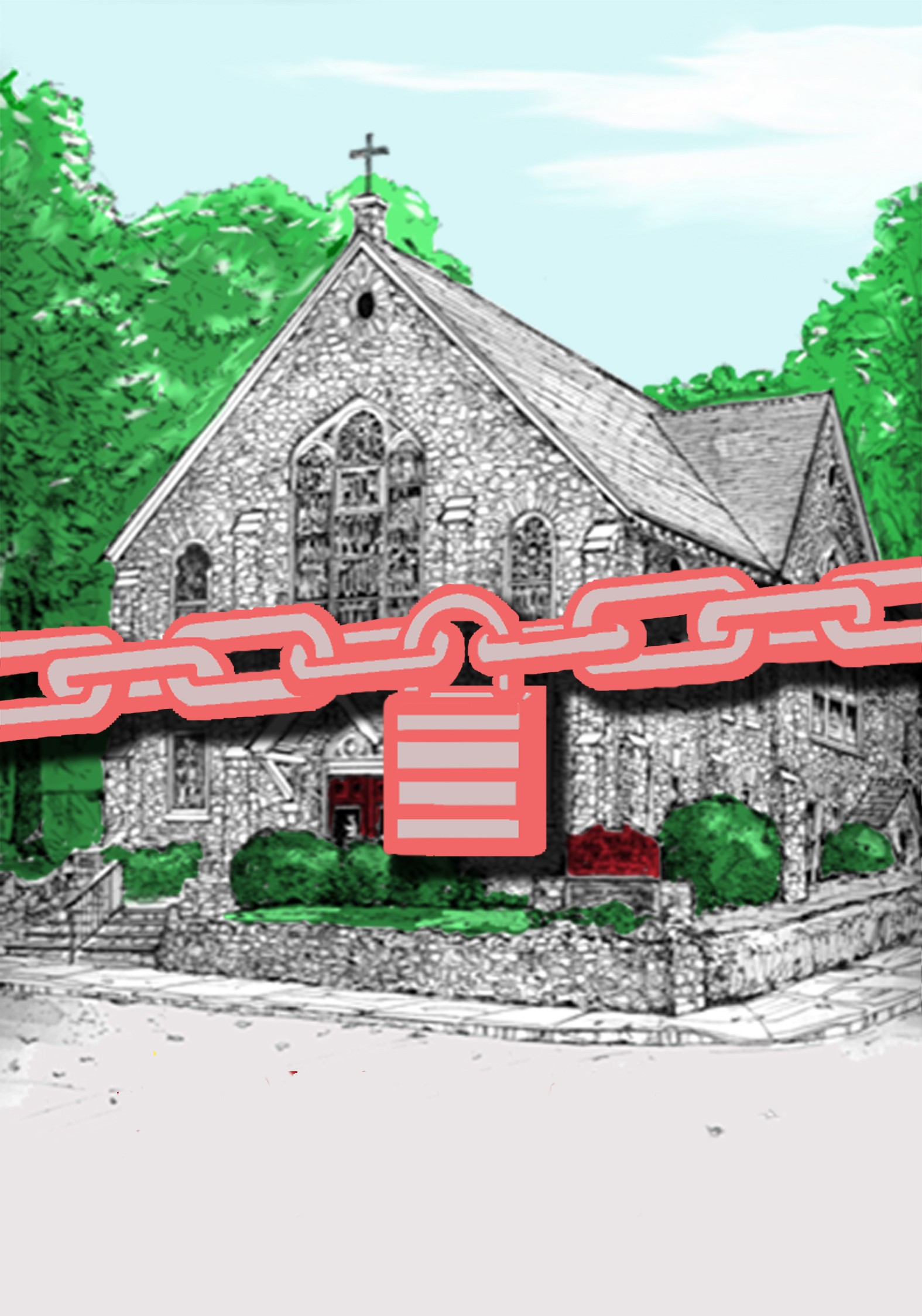 Lutherans are an accepted mainline Christian denomination. They can’t possibly be considered a cult, can they?
Lutherans are an accepted mainline Christian denomination. They can’t possibly be considered a cult, can they?
There is debate about what constitutes a cult as opposed to a religion. Some authorities refuse to use the word “cult.” Others believe the word appropriately describes religious groups with certain common characteristics.
Interestingly, both extremes agree on one point. Cults include religious groups that exist outside the law — including their own governing laws.
This was part of the court ruling in the SEPA/Redeemer conflict. The Pennsylvania Court of Appeals ruled in a split decision that the case brought against the congregation by the Southeastern Pennsylvania Synod of the Evangelical Lutheran Church in America (SEPA/ELCA) could not be heard because of First Amendment separation of church/state. However a strongly worded dissenting opinion found that if the law is applied, Redeemer’s position is well-grounded.
The question for lay church members and all Lutherans is serious. How are we to function when our constitutions cannot be interpreted by the law and when leaders are immune from the law but do not hesitate to use their protected status and the law to attack church members?
We predict this will be a continuing problem in the Lutheran church.
As this conflict unfolded over a period of about five years, several other cultlike characteristics came to define SEPA’s leadership.
 The ELCA describes itself, its congregations, synods and agencies as interdependent. There is no hierarchy. Each expression is to be supportive of the other. These characteristics are not necessarily descriptive of every synod or every congregation. However, each characteristic we cite can be documented in the SEPA/Redeemer conflict. The following posts record some of what went on.
The ELCA describes itself, its congregations, synods and agencies as interdependent. There is no hierarchy. Each expression is to be supportive of the other. These characteristics are not necessarily descriptive of every synod or every congregation. However, each characteristic we cite can be documented in the SEPA/Redeemer conflict. The following posts record some of what went on.
- Cults are control-oriented. Bishop Claire Burkat refused to work with Redeemer’s elected leaders, insisting on taking every issue directly to the congregation. This destroys constitutionally mandated congregational leadership structure. Redeemer insisted that she respect the elected leaders of the congregation as spokespeople for the congregation (which is why congregations elect leaders). Bishop Burkat replaced Redeemer’s leadership by decree — without meeting with either the leadership or the congregation to discuss this.
- Isolation is used as a control tool. The pastor serving Redeemer in 2006 resigned with 10 days notice after a private meeting with the bishop. A year later, the pastor Redeemer hoped to call visited with the Bishop’s office and never returned to Redeemer. This gave Redeemer no clergy vote, voice or influence.
- Cults make it difficult to leave. Redeemer passed a congregational resolution to withdraw from the ELCA, which is constitutionally allowed. According to the constitution, a request is supposed to activate a 90-day period of negotiation. SEPA responded by informing Redeemer it could not withdraw; it was officially “terminated.” The congregation would no longer have a vote or voice in any gathering of Lutherans.
- Rights of members are not clearly defined. Redeemer was told it had no right to appeal until a week before Synod Assembly in 2008. The cycle repeated in 2009. Throughout this process, Redeemer’s requests for appeal guidelines were ignored. The format for the appeal was provided just days before Synod Assembly. At the same time, Redeemer was told they could attend Synod Assembly ONLY for the purpose of the appeal—despite the fact that their delegate registrations had already been accepted.
- Questioning leadership is discouraged. Redeemer’s attempts to communicate with the synod were ignored.
- Cults treat the property of members as if it is their own. The whole purpose of the Redeemer conflict was to make Redeemer’s property synod’s property. Today, four years after the courts deeded our property to synod, Bishop Burkat can barely say the name Redeemer. She calls us “former” Redeemer (although we never voted to close). She refers to our property as the land “once occupied” by “former Redeemer” as if we never purchased it, owned it, and built and cared for the buildings. In her mind our ownership of land seems to have been in trust — waiting for the day she wanted to claim it. Other SEPA congregations take note. If SEPA’s logic applies, you think you own your land. SEPA thinks you occupy THEIR land.
- Cult leadership exploits vulnerable circumstances, even creating the illusion of crisis, with no attempt to address the problems. Although, SEPA refused to help the congregation find leadership, Redeemer was not in crisis. The church was growing and ready to call new leadership. Many congregations are under the false impression that Synod was financially supporting Redeemer. Other way around!
- Cult leadership answers to no higher authority. Redeemer requested assistance from Bishop Hanson and the legal offices of the national church but were turned away. An attempt to talk to a Synod Council member (who are supposed to represent the congregations) was rebuffed.
- Cult leadership employs deception. Synod-appointed trustees introduced themselves to Redeemer as “fact finders” not “trustees.” Redeemer was not informed it was under synodical administration for five months. Bishop Burkat came to a meeting announced for one purpose and had a locksmith hiding in a van behind the property.
- Cult leaders use fear and intimidation. A Redeemer officer was warned to “get out while the getting is good.” The first resort of Bishop Burkat was a lawsuit naming individual church members personally. Add to this the pastors who “disappeared” after meetings in the bishop’s office. And then there was the Showdown on Midvale Avenue.
- Cult leaders use character assassination. The story persists, first told by trustees in 2008, that Redeemer members tried to have the bishop arrested. This never happened. That was the beginning of the gossip against Redeemer leaders.
- The lack of open debate is a sure sign of a cult. SEPA made all rules for the appeal forum. A mere 10 minutes was allotted for discussion, extended at the last minute by the bishop to 20 minutes. All of that 20 minutes was filled with pre-arranged speakers—more than doubling Synod’s presentation time. The first person to reach the microphones with a question was told “time is up.” Redeemer was not allowed to participate in the discussion. In three years, no active pastors have spoken publicly on these issues.
- Events are controlled. (See above)
- The behavior of the leaders is excused no matter how harsh or harmful to members. Eleven volunteer lay members of Redeemer are threatened with the loss of their homes as the result of four years of litigation. No one in SEPA is asking if this harsh treatment of Redeemer church members is necessary or advisable.
- Dependency on the group leader is encouraged. Analytical thought is discouraged. Redeemer was told in 2006 that they couldn’t do outreach ministry except through synod’s mission office, which would direct and control mission activity. There are no such rules in either the synod’s or the congregation’s constitutions. It is the mission of every congregation to do outreach ministry. Synod cannot possibly control them all! Or maybe they can! Our Ambassador visits reveal a high percentage of congregations have interim, bridge, or mission developer pastors, which report to Synod. There is a reason why Synods demand congregations work with a Synod Mission Office. It’s an underhanded abuse of the constitution. Once a congregation accepts help from a Mission office, they lose property rights. But congregations don’t know that until it’s too late.
- Practical solutions are excluded in preference of a leader’s wishes. Redeemer has offered numerous compromises for peace and been ignored. There are many ways to resolve this conflict that would be in line with Christian teachings.
- The use of loaded language. Bishop Burkat opened her only meeting with Redeemer representatives with a tirade using the word “adversarial” repeatedly. Most of the people present had never met the bishop before. The incessant and false re-telling of the “attempt to have the bishop arrested” is another example.
- Cults promote the illusion of innovation. 2012 Synod Assembly rallying cry: “God is doing something new” without much evidence of any new thinking.
- Excessive use of guilt. Members are never good enough. Their history is criticized. Their leaders are criticized. Their social connections are faulted. Redeemer knows all about this!
- Leaders claim no responsibility. Members bear all the blame.
- And finally . . . . Cults operate in defiance of the teachings of their scriptures. Lutherans should be practicing what we preach . . . love, compassion, reconciliation, forgiveness and atonement. Not in SEPA!
We’ve heard similar stories in at least three other ELCA synods, but we are not suggesting that all ELCA synods and congregations fit the above criteria. But some Lutheran entities have clearly lost their way.
There is cause for concern. We trust there is also hope.
_________________







